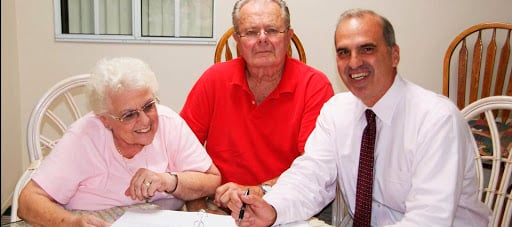
Craig Cox was driving his father, Ron, to a medical appointment at Ronald Reagan UCLA Medical Center in Los Angeles when the subject of senior living in a CCRC came up.
“My dad was getting older and knew he needed some more help,” Cox says. “I’d been talking about HumanGood as an option for a while, and then he brought it up on the way to UCLA. He said, ‘What do you think?’ and I said, ‘I think it’s something we should pursue.’”
There was just one problem: the cost. Financing senior living seemed out of reach because neither his parents nor his siblings thought they could afford life at a senior living community. And they aren’t alone. In fact, just 27 percent of Californians over age 40 are confident they have the financial resources to pay for long-term care. But, Cox, who has been a financial planner for more than 25 years, knew that there was a way to make it work.
“A lot of people disqualify themselves from senior living up front without really understanding the numbers,” says Cox, who is first vice president and wealth advisor for the Cox Huffman Volpei Group at Morgan Stanley in Pasadena, California. “They make a blanket assumption that it’s more expensive than how they’re living now, so they think, ‘How are we ever going to afford that?’”
According to Cox, whose parents moved into HumanGood’s Westminster Gardens, a Southern California senior living community, in 2013, the answer is two-fold: assets and amenities.
Non-working Assets Can Work for You
Most people have two types of assets: working assets—such as IRAs, brokerage accounts and savings accounts—and non-working assets.
“A lot of seniors have a huge non-working asset: their home,” explains Cox, who says seniors who have paid off their houses often overlook their home equity. “They have this thing that has a huge amount of value, but they haven’t monetized it in their heads.”
Because it generates cash that can be leveraged as income, selling one’s home instantly turns a non-working asset into a working asset. Invested wisely, for instance, a $500,000 home sale conservatively could generate an additional $20,000 in income a year, according to Cox. “Now, all of a sudden, you’ve added $1,500 to $2,000 a month to what you thought you could afford,” he says.
And that doesn’t even take into account things like property taxes and maintenance. “With my parents, there would always be a major home improvement project every year—putting up a fence, painting, plumbing. Those costs go away,” continues Cox.
To clarify his point, he performed a cash flow analysis for his parents, showing the positive impact that selling their house would have on their finances—even after paying to live at Westminster Gardens. The income, he projected, would last well beyond their life expectancy. “Suddenly, senior living starts to look a lot more feasible.”
When Financing Senior Living, Amenities are Priceless
Even if you leverage non-working assets to finance the move to a senior living community, you might worry about the cost of living once you’re there.
Although the costs are different when you move from a home into a community—you have to budget for a meal plan, for example, instead of groceries—they aren’t necessarily higher. In fact, the preponderance of free onsite amenities, such as exercise classes, social clubs, religious services and concerts, means residents often spend less on things like transportation and entertainment than they would if they lived outside the community.
Just as important as what you spend living in a senior living community, however, is what you gain.
“There are five love languages that people use to express themselves: gifts, quality time, words of affirmation, acts of service and physical touch. My dad’s love language is acts of service, and now he lives in a community where he can constantly express that by volunteering and helping other people,” Cox says. “In the same way, my mom used to be very closed off from the rest of the world, but she is now in a community that she wants to be a part of. For both of them, their quality of life has gone up dramatically. What’s the price you can put on that? I think it’s priceless.”



.png?width=260&height=56&name=new-hg-logo-rev-with-registered-mark%20(2).png)